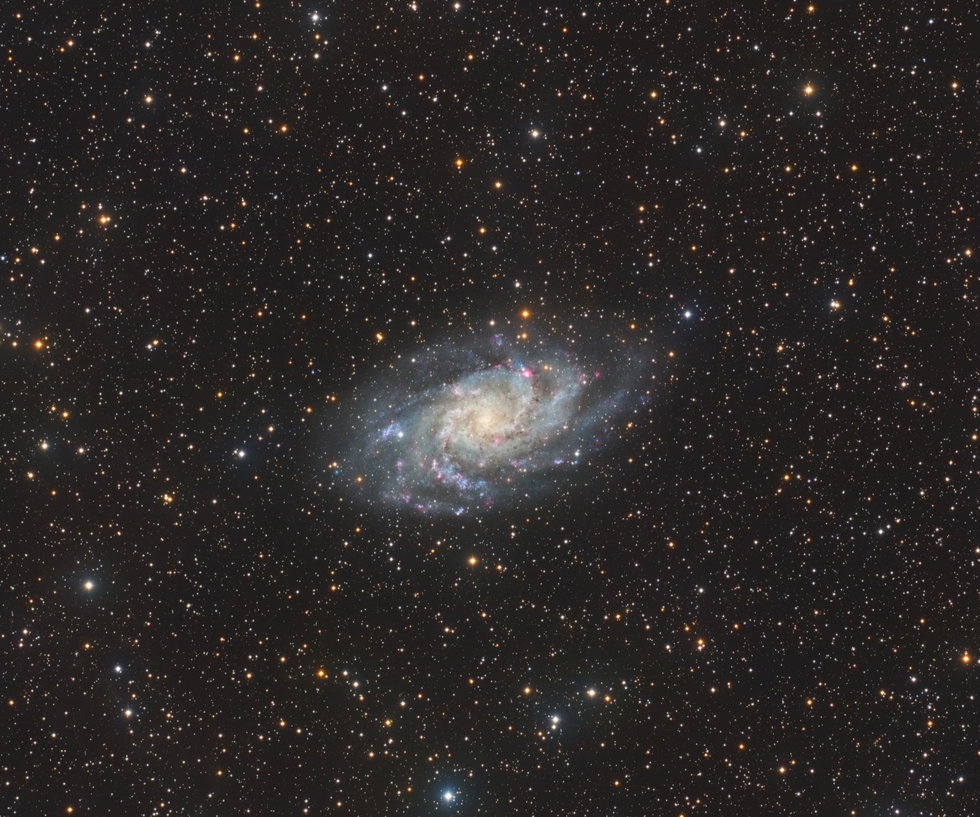Messier 33 - Triangulum Galaxy
Messier 33 - Triangulum Galaxy
Messier 33 / Triangulum Galaxy is the third largest galaxy in the Local Group, after Andromeda and the Milky Way. It is located 2,73 million light-years away in the constellation which gives its name. It has a diameter of 61.000 light-years and an apparent magnitude of +5,7 – in very dark, clear skies, it can be seen with the naked eye as a diffuse cloud.
Most likely, the galaxy was first observed by the Italian astronomer Giovanni Batista Hodierna before 1654, but Messier was the first to officially catalogue it in 1764. M 33 is a spiral galaxy with loose arms, rich in star-forming regions and dust. The nucleus is a HII region, where the star forming rate is even higher than the one in Andromeda Galaxy. M 33 doesn’t have a supermassive black hole in its center, like most galaxy have. Moreover, the stars in the nucleus have a different age than those in the arms, suggesting 2 separate star-forming stages.
Between M 33 and the Andromeda Galaxy there are multiple streams of neutral hydrogen (HI), suggesting a past interaction between the two. It looks like M 33 will merge with the result of the collision between Andromeda and the Milky Way, but the timeframe is not yet very well defined.
Most likely, the galaxy was first observed by the Italian astronomer Giovanni Batista Hodierna before 1654, but Messier was the first to officially catalogue it in 1764. M 33 is a spiral galaxy with loose arms, rich in star-forming regions and dust. The nucleus is a HII region, where the star forming rate is even higher than the one in Andromeda Galaxy. M 33 doesn’t have a supermassive black hole in its center, like most galaxy have. Moreover, the stars in the nucleus have a different age than those in the arms, suggesting 2 separate star-forming stages.
Between M 33 and the Andromeda Galaxy there are multiple streams of neutral hydrogen (HI), suggesting a past interaction between the two. It looks like M 33 will merge with the result of the collision between Andromeda and the Milky Way, but the timeframe is not yet very well defined.
SPECIFICATIONS
Telescope
Takahashi FSQ-106ED - Spain 1
Camera
FLI PL16083
Location
Spain
Date of observation
Sep 2021 - Feb 2022
Filters
LRGB
Processing
PixInsight



